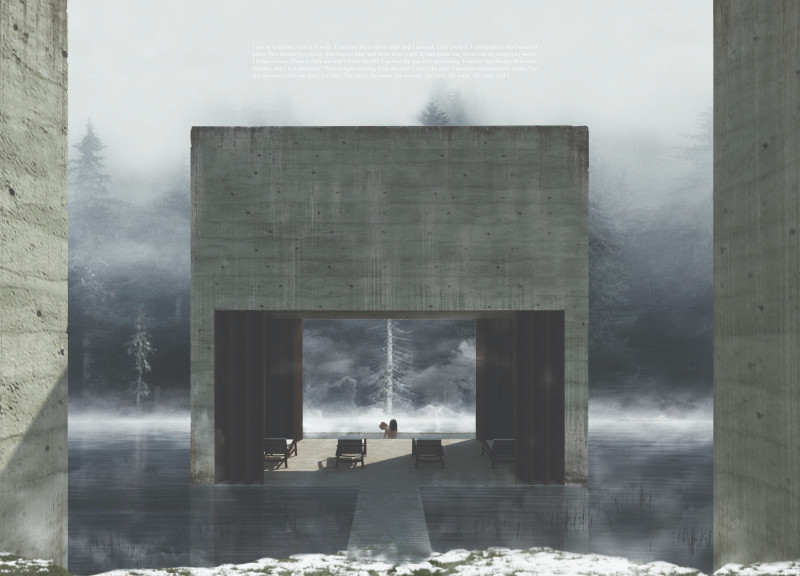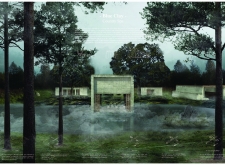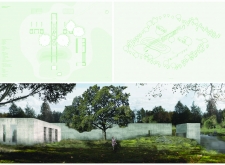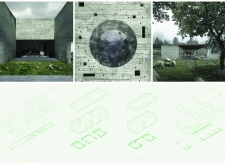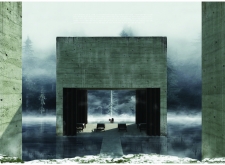5 key facts about this project
At its core, the design reflects a commitment to simplicity and coherence. The main structure is characterized by the use of reinforced concrete, delivering a robust framework that complements the local terrain. Large expanses of glass are skillfully integrated, allowing natural light to fill the interior spaces, creating a seamless transition between the indoors and outdoors. This design choice not only enhances the spatial experience but also invites the surrounding landscape into the heart of the architecture.
The project features distinct volumes arranged strategically to promote visibility and interaction with nature. The layout is carefully considered to ensure that guests can appreciate the natural beauty from multiple vantage points, fostering a sense of peace and connection with the environment. Each element has been thoughtfully positioned to create a harmonious flow throughout the spa, enabling visitors to navigate effortlessly from one space to another.
In addition to its architectural elements, the interior design of the Blue Clay Country Spa plays a vital role in the overall experience. The use of natural materials, such as wood and stone, reinforces a sense of warmth and grounding. Warm wooden furnishings, blended with stone surfaces, create inviting spaces that resonate with the natural aesthetics of the countryside. This careful selection enhances comfort and supports the spa's ethos of relaxation and wellness.
One of the standout features of the design is its commitment to sustainability. The project utilizes innovative strategies for water management, including systems for rainwater harvesting. This not only reduces environmental impact but also aligns with the project’s focus on harnessing natural resources. Furthermore, the architectural layout takes advantage of natural cooling techniques, which minimize energy consumption while enhancing comfort for the guests.
The landscaping around the spa is meticulously planned, maintaining the integrity of existing vegetation and incorporating wellness pathways that encourage outdoor activities. These pathways are designed for jogging, meditative strolls, and yoga, aligning with the overall wellness philosophy of the spa. Water features further enhance the environment, providing both aesthetic appeal and therapeutic benefits, with reflective elements that add to the serenity of the space.
Unique design approaches are prevalent throughout the Blue Clay Country Spa. The blending of structures with natural elements demonstrates a clear understanding of the site and its attributes. By prioritizing sustainability, the design not only addresses the immediate needs of its users but also contributes positively to the broader ecological context.
The architectural designs and spaces articulated within this project are testaments to the possibilities of thoughtful, sustainable architecture. For those concerned with wellness, architecture, and design, exploring the architectural plans, sections, and ideas of this project will provide a deeper insight into its conception and functionality. I encourage you to engage with the project presentation to appreciate its design intricacies and innovative integration with the landscape.


